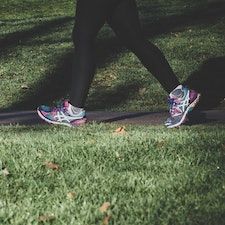Article
High Physical Activity Linked to Poor Glycemia Level in Patients with T1D, Obesity
Author(s):
The findings are in contrast to previous research that suggests an inverse relationship between moderate-to-vigorous physical activity and HbA1c, TIR.

Among young adults with type 1 diabetes (T1D) and overweight and obesity, new findings suggest higher levels of physical activity may result in challenges in achieving optimal glycemia.
Study investigators noted this is in contrast to previous research that suggests an inverse relationship between moderate-to-vigorous physical activity and hemoglobin A1c (HbA1c) and percent time in range (TIR, 70 - 180 mg/dL).
The late-breaking findings were presented at the American Diabetes Association (ADA) 2022 Scientific Sessions.
“Future work is needed to determine how to best support young adults with T1D and overweight and obesity in attaining both their physical activity and glycemic management goals,” wrote lead investigator Franklin Muntis, MPH, UNC Gillings School of Global Public Health.
A gap in literature regarding the relationship between physical activity among this patient population led to the current analysis, according to investigators. The first aim of the analysis was to determine if habitual levels of weekly minutes of moderate-to-vigorous physical activity (MVPA) arte associated with glycemia. Investigators hypothesized that an increase in weekly minutes of MVPA would lead to increased time in range and lower HbA1c.
The second aim for the investigators was to analyze if daily minutes of MVPA was associated with glycemia on the day of and day following reported physical activity. They hypothesized an increase in daily minutes MVPA would equal increased time in range on the day of reported activity.
The ACT1ON pilot study evaluated the feasibility of 3 dietary strategies to optimize weight and glycemic management among this patient population. A secondary measure of self-reported physical activity was obtained at baseline, 3-, 6-, and 9-months from a total of 68 young adults with T1D with a mean age of 25.5 years (72.1% female, HbA1c 7.9 ± 1.8%, BMI 30.4).
Investigators used the Global Physical Activity Questionnaire (GPAQ, n = 195) and the Previous Day Physical Activity Recalls (PDPAR, n = 123) to estimate the weekly minutes of MVPA. After the outbreak of the COVID-19 pandemic, a subgroup of individuals wore physical activity trackers for 2 weeks at each visit for a total of 44 measurements from 27 participants.
They further used mixed effects regression models to assess the relationship between weekly minutes of MVPA and HbA1c using each physical activity measure.
Investigators found the median weekly minutes of MVPA were 33% lower following the outbreak of the COVID-19 pandemic when compared to pre-pandemic physical activity levels (P = .02) in the GPAQ, but not the PDPAR (-7.7%; P = .34).
Then, after adjustments for variables, including design, demographic, clinical, and dietary variables, a 1 standard deviation increase in weekly minutes of MVPA was associated with an absolute increase of 0.27% HbA1c (P >.001), according to investigators.
Movie Rover, a small, statistically non-significant association was observed for PDPAR (β = .13, P = 0.19), but a statistically significant association was observed using the pjhysical activity tracker data (β = .231, P = .08), despite a smaller sample size.
“Future educational materials should include strategies for preventing both hypo- and hyperglycemia following physical activity,” Muntis concluded.
The study, “Physical Activity and Glycemia Among Young Adults with Type 1 Diabetes and Overweight or Obesity: Results from Advancing Care for Type 1 Diabetes and Obesity Network (ACT1ON),” was presented at ADA 2022.




